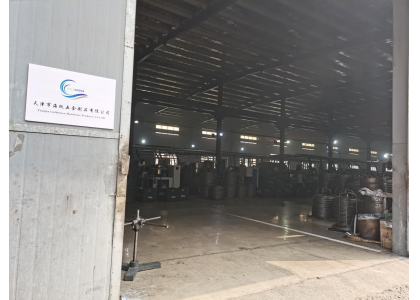
Screws may seem like unremarkable little parts, but they are essential to everything. It has a wonderful name -- screw. Can you imagine something so simple? How is it made?
Don't underestimate it, just the production process has six steps. 1. Wire selection. Before the wire drawing must have a preliminary understanding and understanding of the materials required. Wire kind is very much, can choose corresponding material to pledge according to different use. 2. Rough drawing processing. There are two main steps. It is the processing of wire above all, the wire that chooses diameter 5-19mm serves as raw material commonly.
The second step, rough drawing processing. The wire is heated for a period of time and then slowly cooled to adjust the crystalline structure, reduce the hardness of the wire, remove particles, and improve the processing performance of the wire at room temperature, a process we call annealing.
Followed by pickling phosphating, the metal surface to form phosphate film oxide film from the surface of the wire removal. After the phosphating film, the wire is easier to process and form, and also reduces the wear and loss of the worker's mold in the subsequent processing, such as wire drawing and cold heading. Finally, the annealing process, through the heat treatment of the coarse wire drawing, so that its internal structure changes, so as to improve the tensile strength of the role. 3. Select the corresponding rough drawing process according to different specifications of products. In simple terms, the purpose of rough drawing is to remove the oxidized skin produced in the production and storage process of the wire, and the surface of the wire takes on the original color after rough cutting.
The third step, fine drawing processing. In this step, you need to pull the wire rod to the corresponding diameter thickness according to the requirements of different products. After rough-rolling to a certain length, the wire is processed by annealing and pickling. Finally, the required dimensional accuracy is achieved. In this process, the surface roughness and surface quality of wire rod should be further detected and analyzed. Then you can move on to the fourth step, which is the molding process, which can be roughly divided into three steps.
The first step is the cold header, which cuts the wire into the desired length and adds nuts and marks. In this stage, it is necessary to process cold rolled strip steel, including rolling, annealing and pickling and a series of processes. Among them, the most important is to recycle the residual materials produced in the process of cold rolling. The second step is the tail design, design the dovetail shape through the steel plate, this is also a very critical step, starting from the tail, to the middle of the thread end. This is the third step, the thread rub, also known as the tooth grind. Through the interaction of the movable dental plate floor and the fixed dental plate, the molded semi-finished product is ground to the familiar thread. At this point, the basic implementation in place.
The second step, heat treatment processing, roughly divided into 5 links. In the first step, the screws are treated preliminarily. This is done in two steps: First remove any residual moisture and grease from the screws, and then clean them with alcohol or gasoline. The second step is to heat and quench the screws. The first step is cleaning to remove grease from the surface of the screws. The second step is high temperature carburizing, which is the core of heat treatment, so that carbon atoms penetrate the surface layer of the screw, increasing the hardness of the screw.
The third step is quenching, that is, the carburizing screw for high temperature quenching, on the surface of the screw to form a layer of crystal, to achieve the final hardness. Step 4: Clean the quench oil on the surface of the screw. The fifth step is low temperature tempering to reduce the hardness of the core of the screw. The sixth link is the detection in the process of assembling and using. The seventh link is the inspection and packaging after heat treatment. Because if the core is hard, it will lead to screw fracture, low temperature temper after the screw will be more ductile.
After the screws are finished, they are usually sent to the laboratory, where the plating is finally stopped after various parameters have been checked. Through electrochemistry, another metal is made on the surface of the screw, which can reduce the external corrosion of the screw body, prevent rust, prolong the service life of the screw, and achieve beautiful results. The steps of screw plating: the first step is to put the screw into the plating tank for pretreatment; The second step is to thread holes in the treated screws; The third step is to clean the screw surface with chemical solution after drilling. Normally, this step takes 1.5 to 2 hours, and the final step is to box the screw according to the model, and then a small screw will be created.